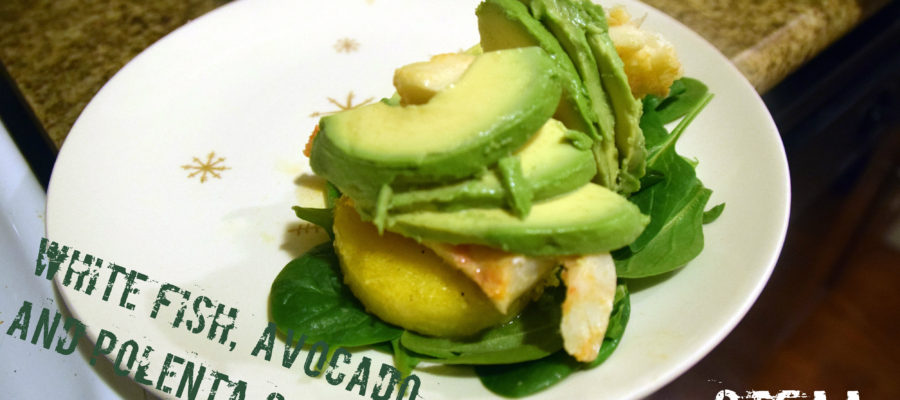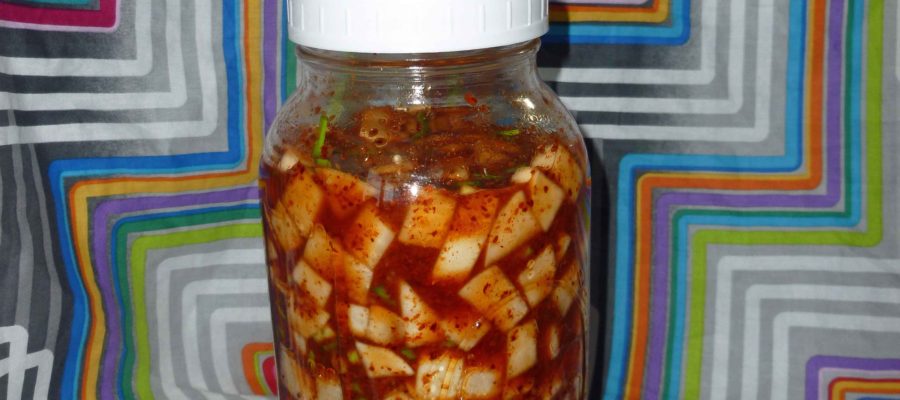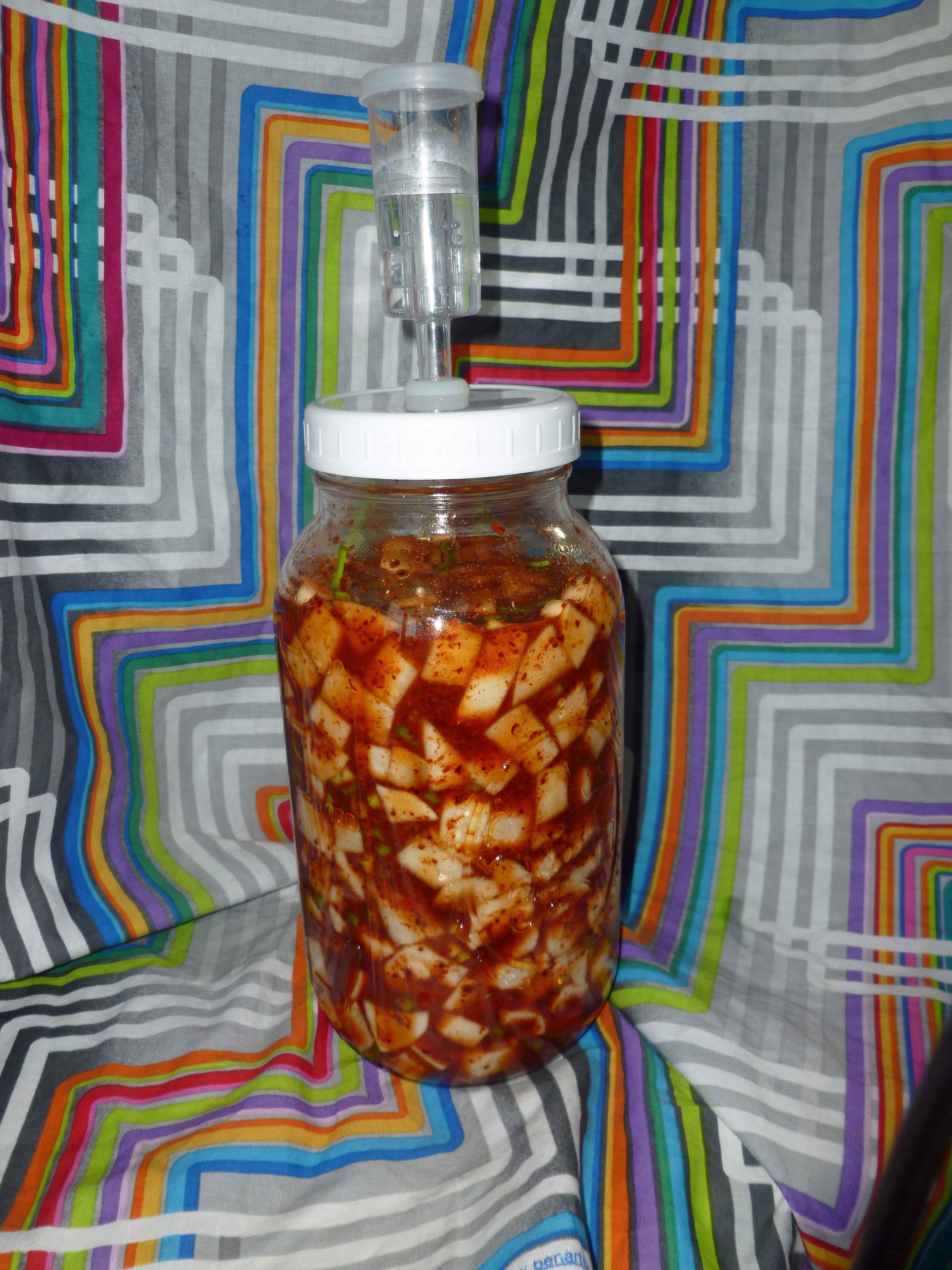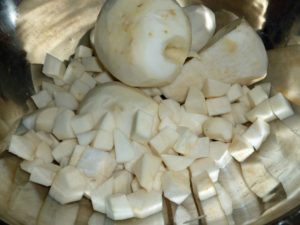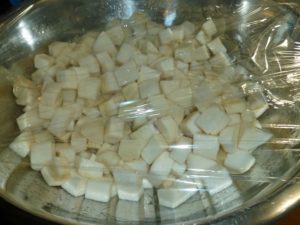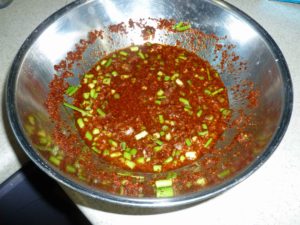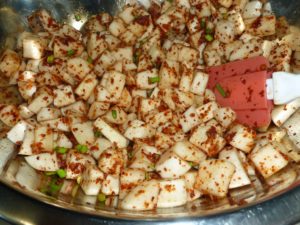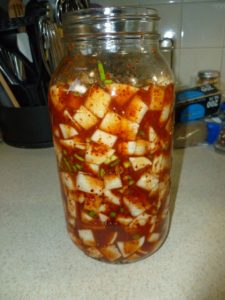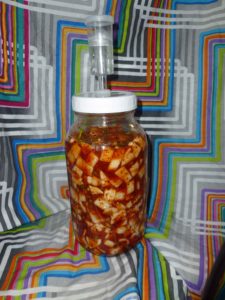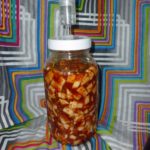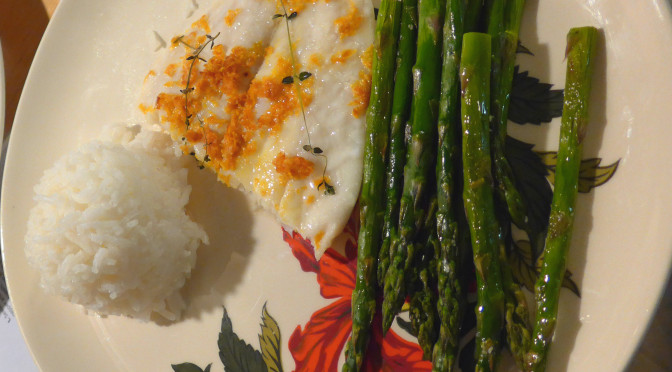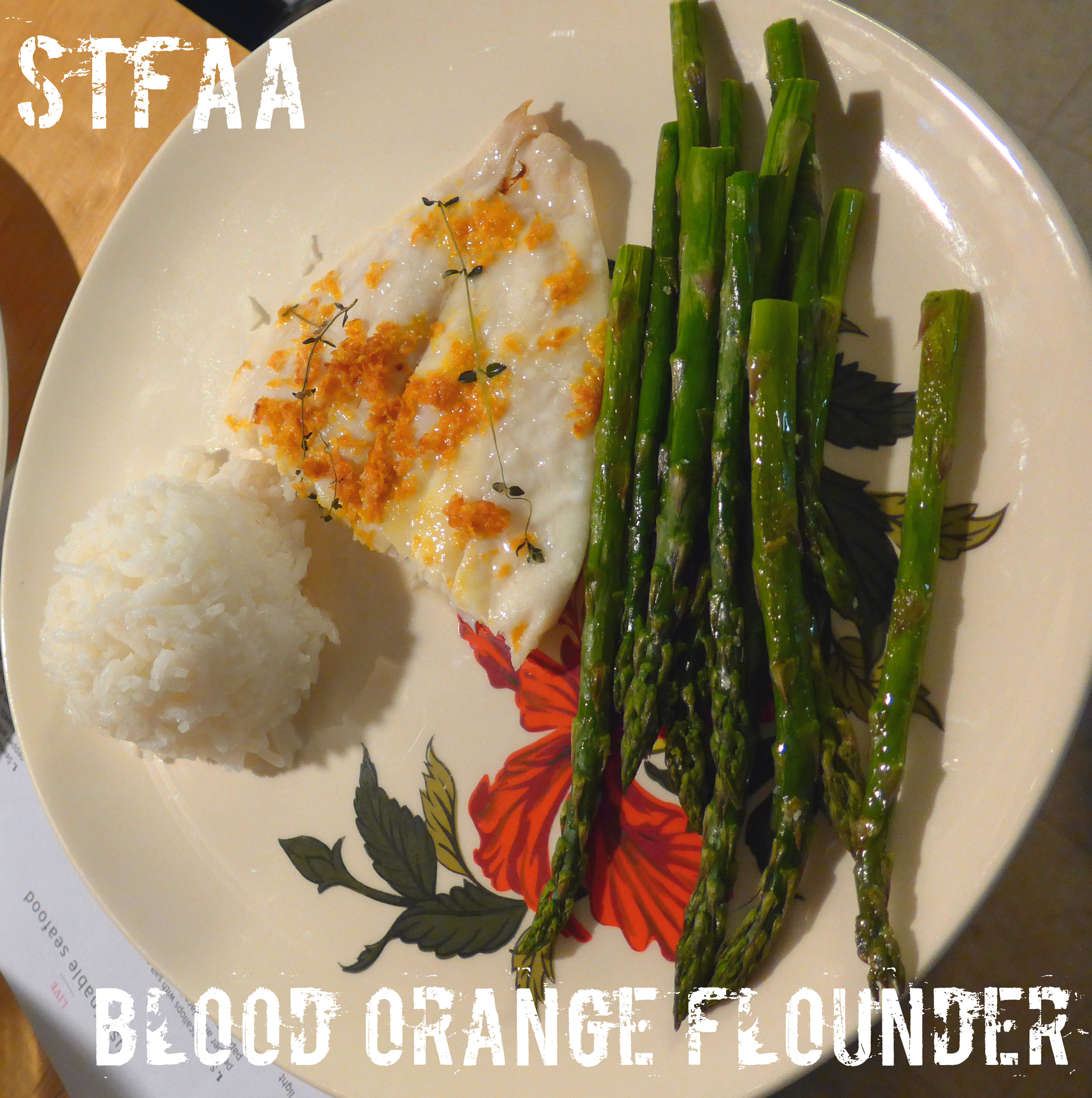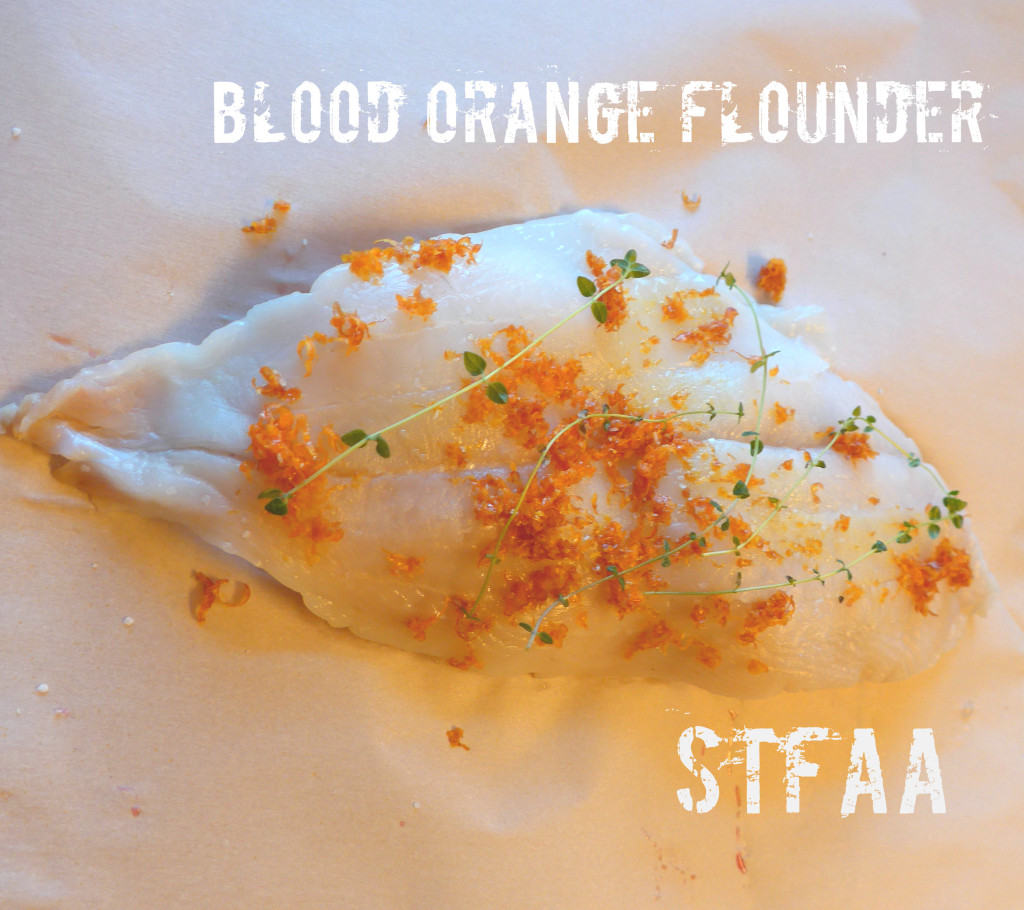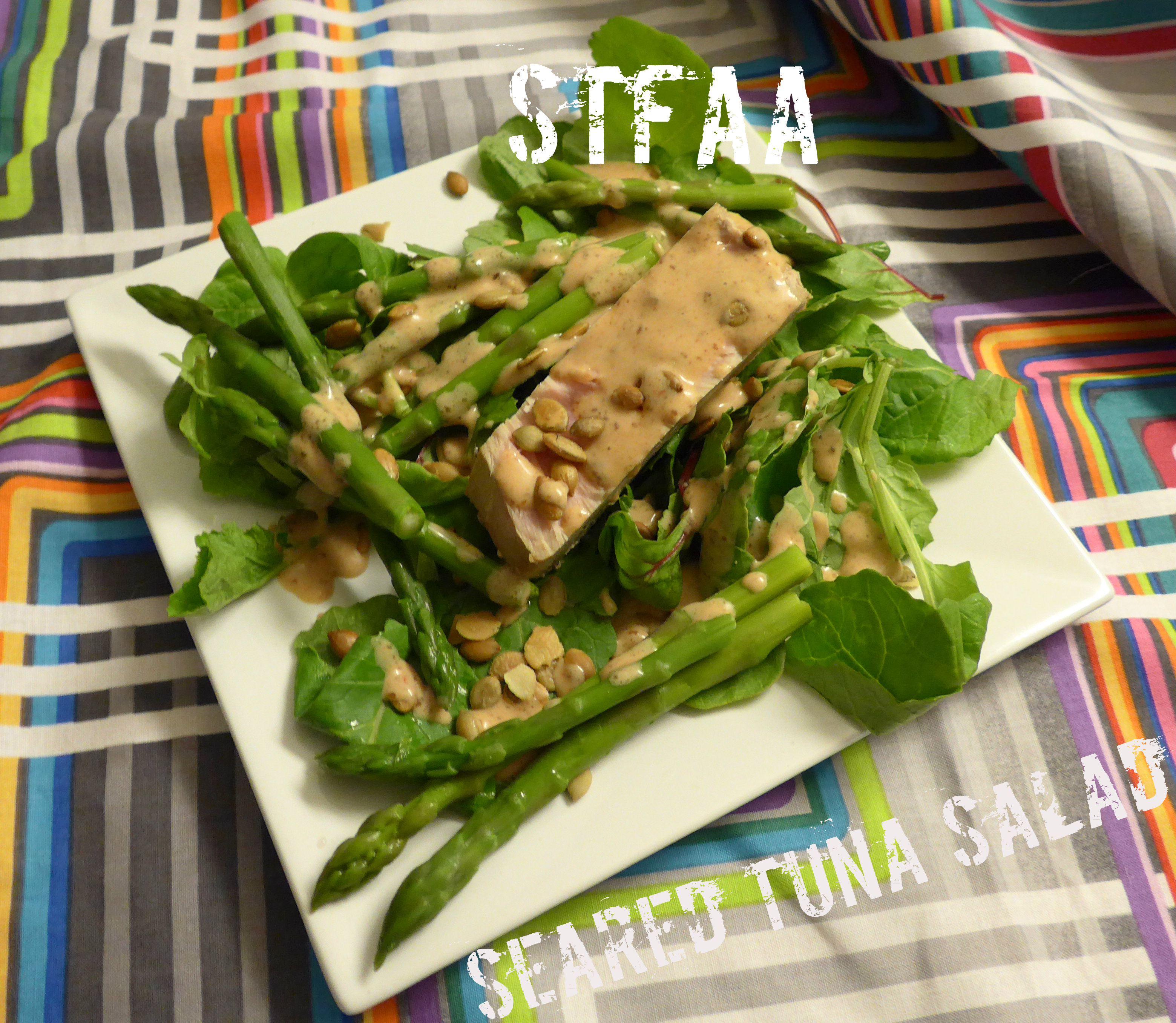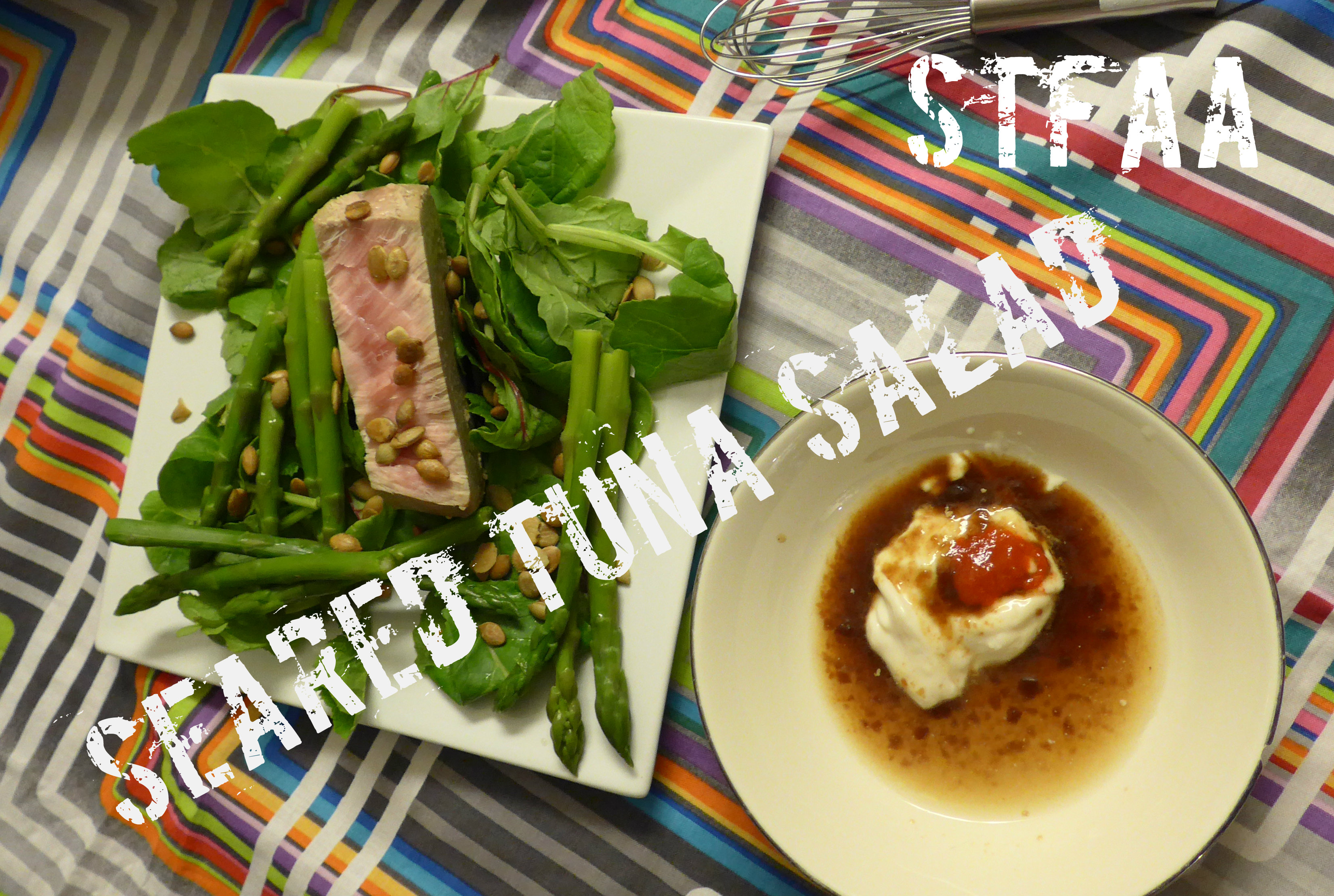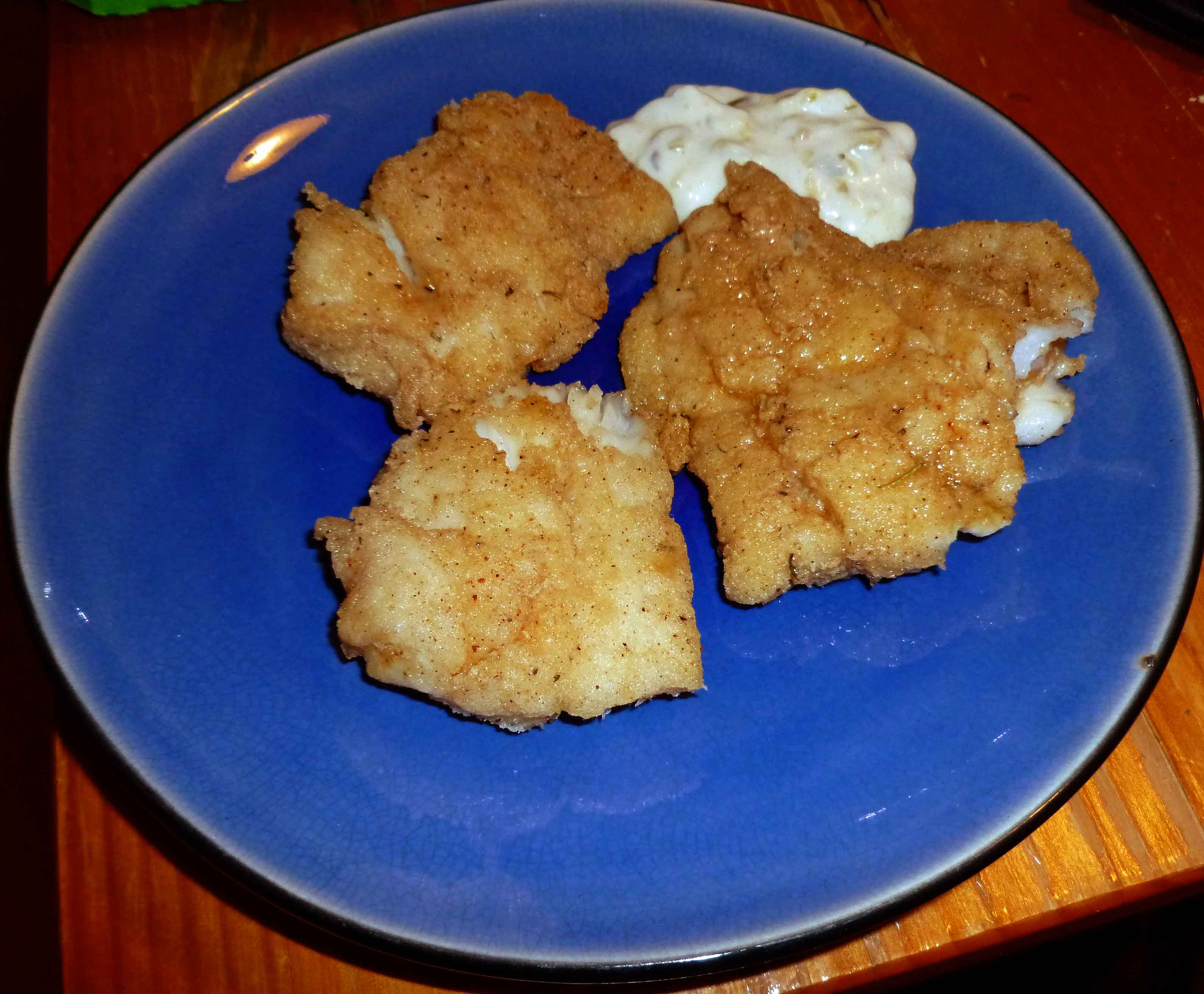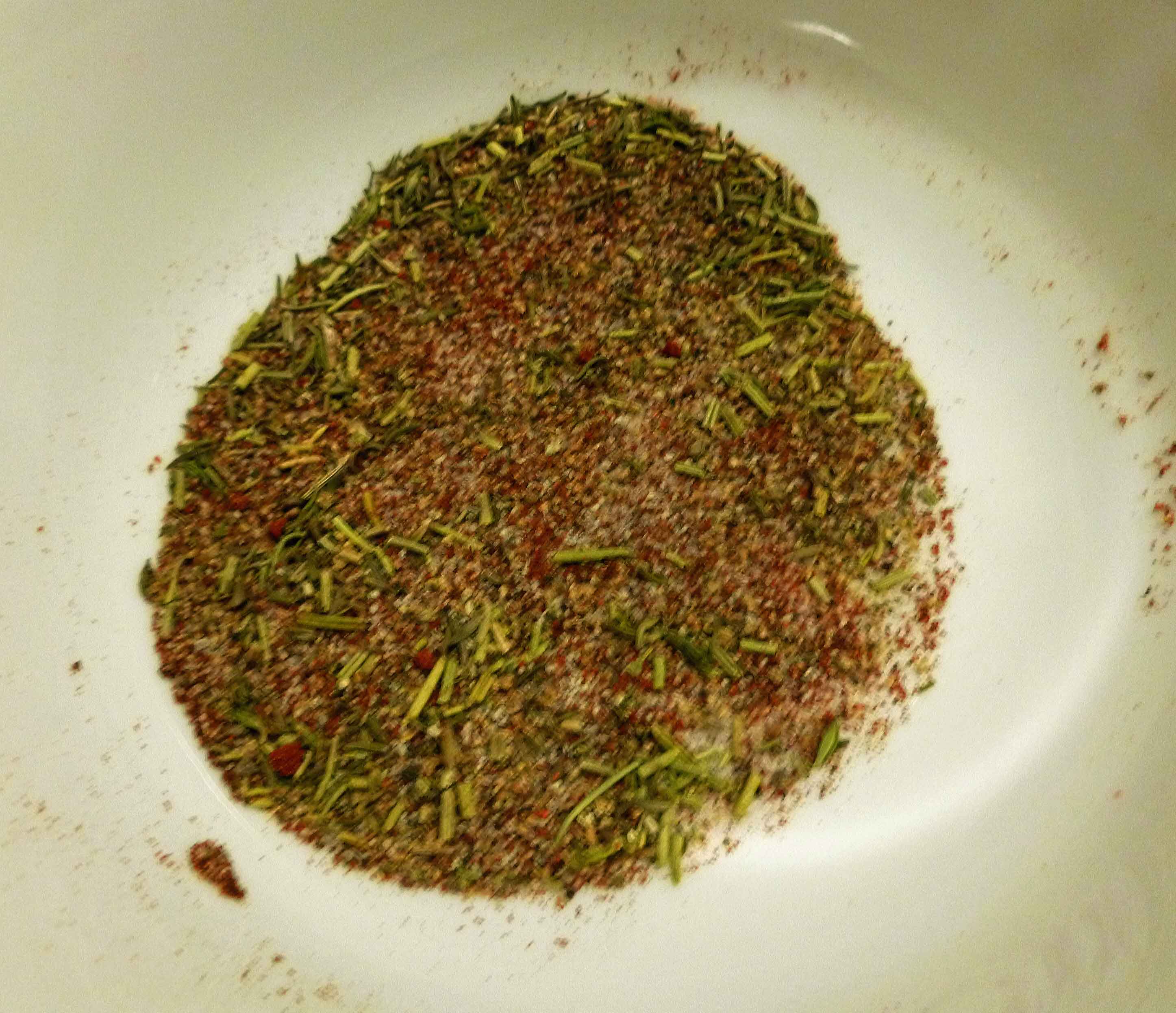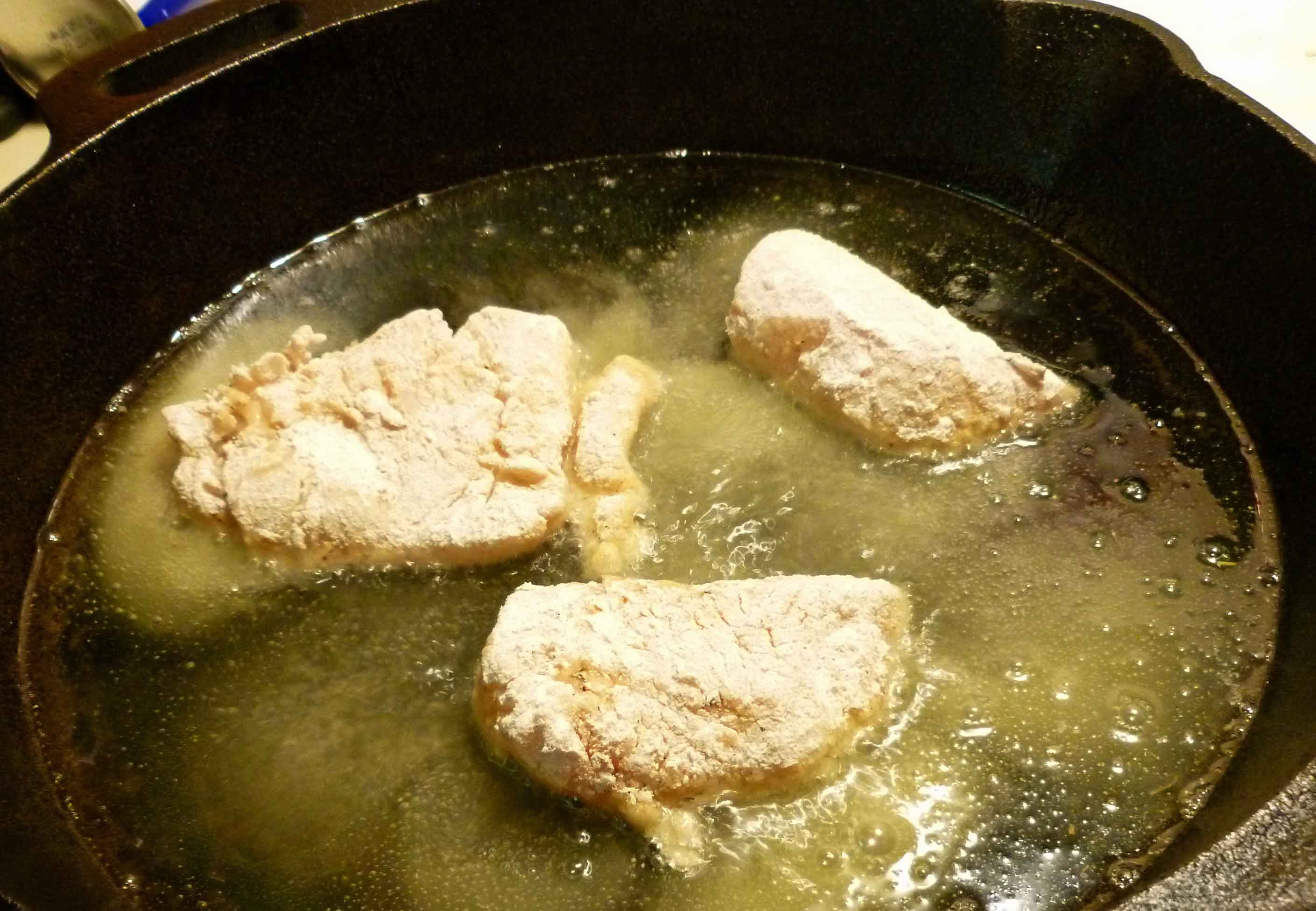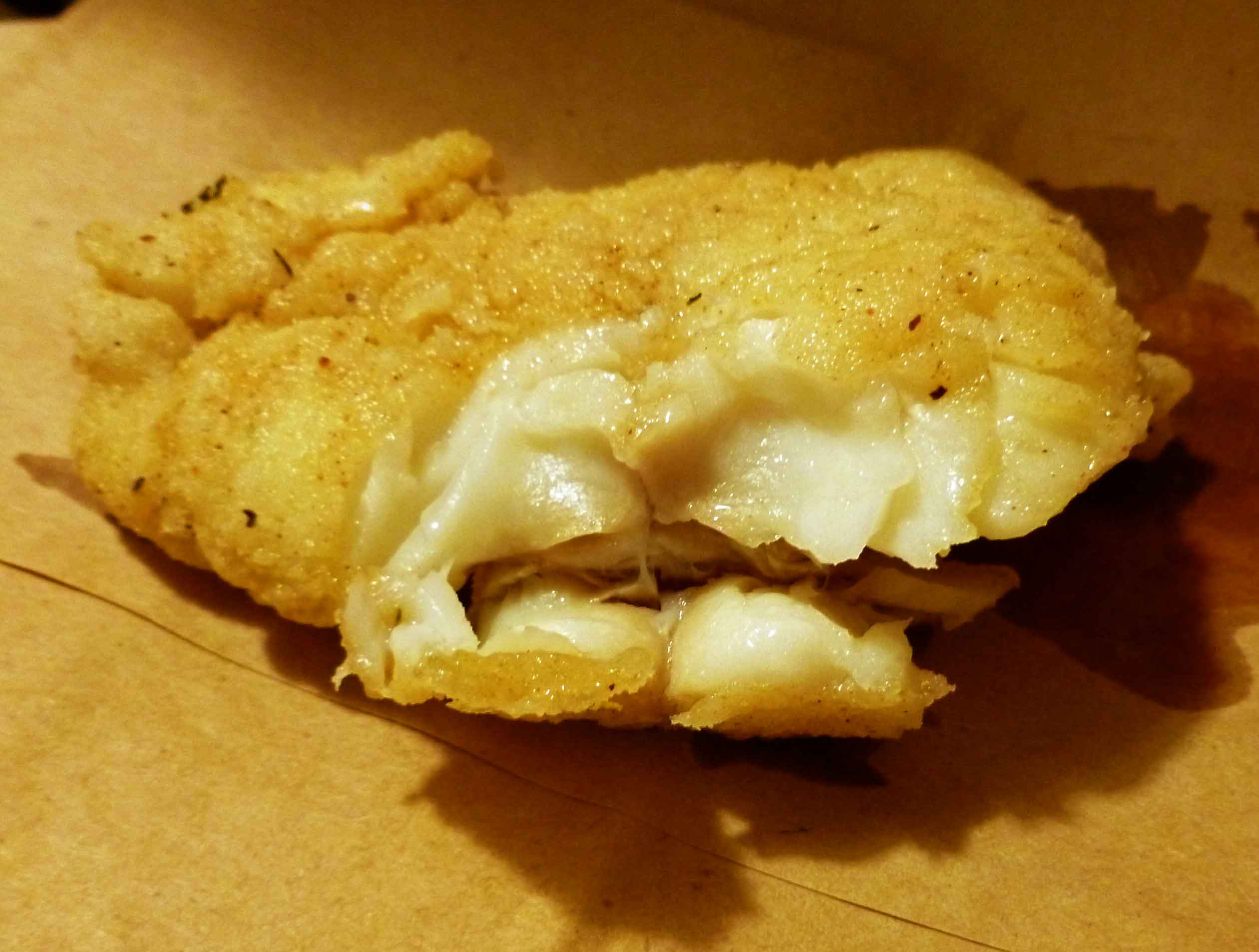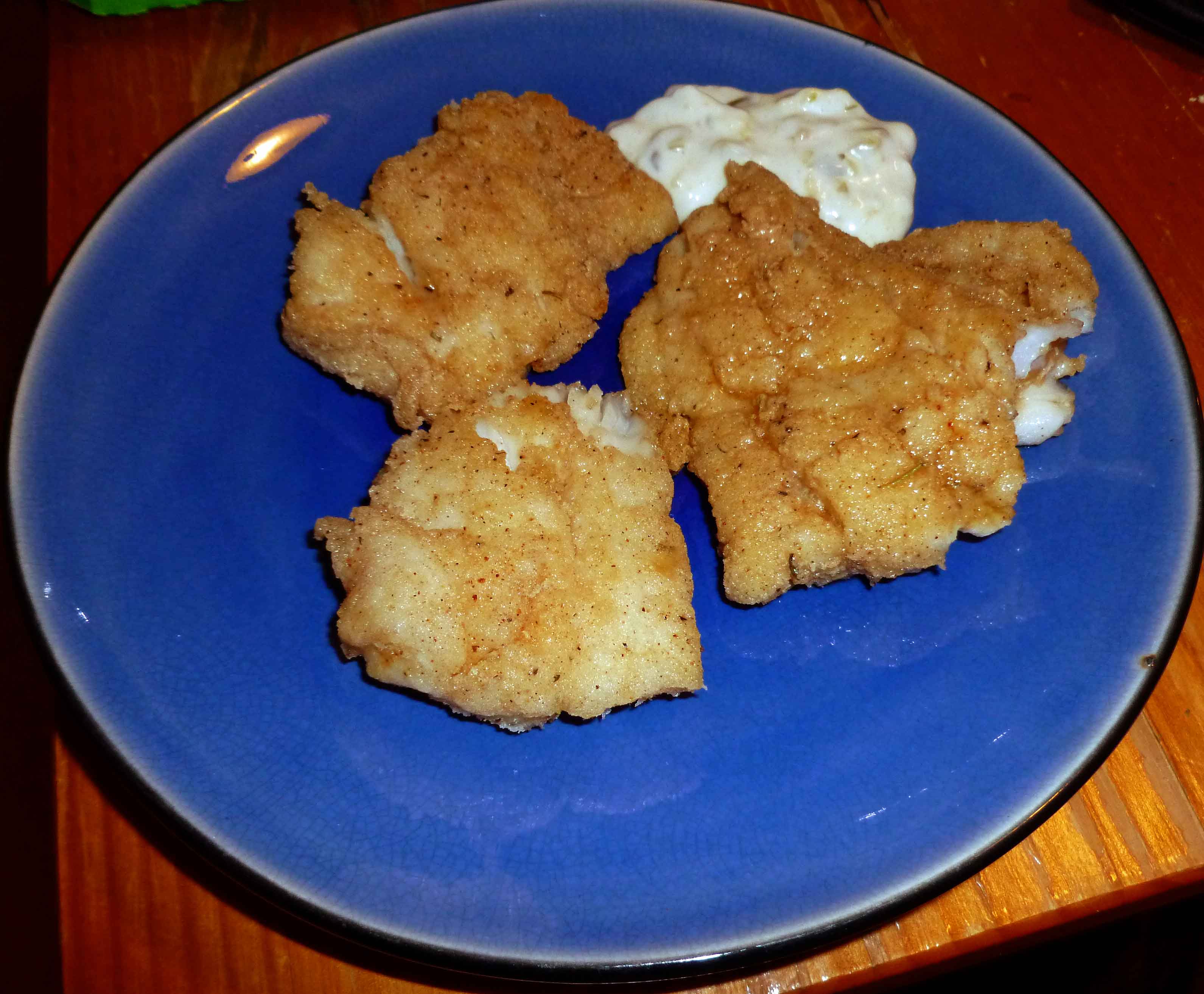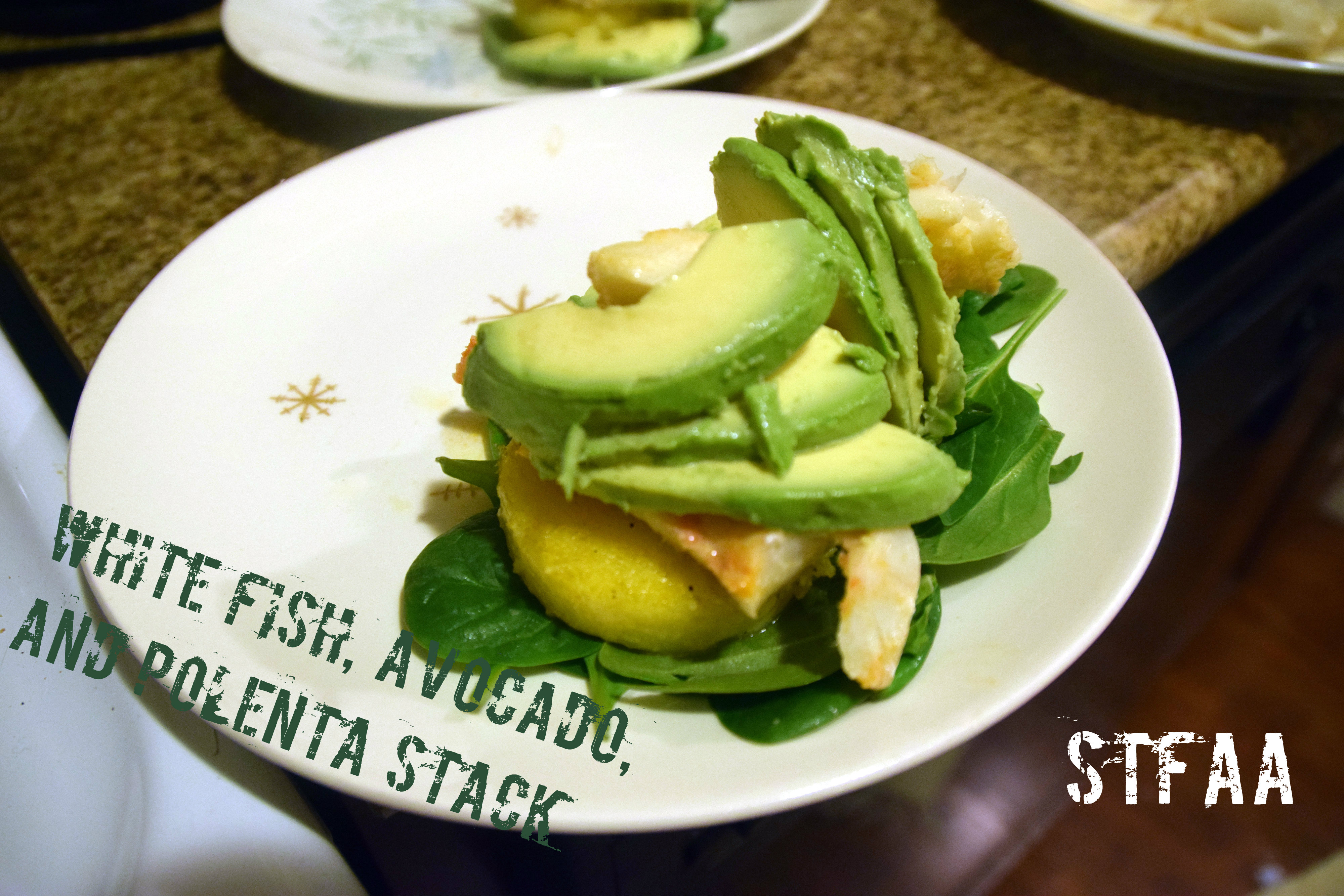
This is the first official recipe from the West Coast Office of Surviving the Food Allergy Apocalypse, also known as “MaryKate’s kitchen in Seattle.” Also, Jack’s kitchen, and because we’re still unpacking and he gets home from work first, he’s actually done a lot more cooking in this kitchen than I have. But we’ve unpacked most things now, and I feel like I can finally make space to work. It’s a completely different layout with way less cabinet space (less than ideal), but with a large closet that helps some with storage. We still have more stuff than space.
Seattle has been great so far. We’ve got all new grocery stores to explore, lots of seafood options, new produce (and a shocking lack of hash brown patties without wheat in them. I had no idea I was so spoiled in New Hampshire on that front). And new places to eat — more on that later.
So we’re in a new city, in new jobs, with new commute patterns. My days are actually longer, as my commute has increased four-fold — and I still can’t complain. In NH, I drove about 7 minutes across town. Now I take a bus about 30 minutes, with about a mile of walking total to and from bus stops. The hill TO the bus stop is… challenging. And an hour is a lot more time commuting. So quick dinners are an absolute necessity, but I’m not eating boring food. For this dinner, I’ve paired spicy poached fish with crispy polenta and creamy avocado for an utterly satisfying meal.
Okay, I’ve called this a “stack,” but as you can see, it was really more of a pile. I envisioned a stack, but my plating skills, despite years of Top Chef watching, leave much to be desired. This is a really quick but impressive dinner that can take advantage of whatever fish and hot sauce you might have on hand. Poaching fish allows me to add a lot of subtle flavor with less danger of overcooking the fish than when I bake it — it’s right there, and I can watch it.
If you’re allergic to fish: I’m sorry! This is not your recipe. Neither Denise nor I are allergic to fish, so we do eat it. It’s one of the things I’m enjoying most about west coast living so far.
If you’re allergic to corn: This we can work with! But, as you know, being corn-allergic, it won’t be as convenient. Make a millet polenta (which is the basis for my Millet and Blueberry Breakfast polenta) and then crispy up cakes of this just as you would the tube of corn polenta. Sorry for the extra steps, but I know you’re used to it. Alternatively, consider serving the fish over a salad.
Also feel free to adjust the ratios of hot sauce to olive oil on the fish, and the wine to stock in the poaching liquid. Use all hot sauce if you’re Denise! Use no wine if you don’t like it or don’t want to buy it. It will be fine. I’ve used a harissa in this version, because I think harissa is flavorful along with being spicy.
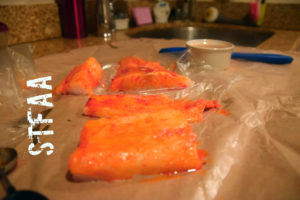
Notice: Trying to access array offset on value of type bool in /home/maryzahc/public_html/adultfoodallergies.com/wp-content/plugins/wp-ultimate-recipe/helpers/models/recipe.php on line 254
- 2 teaspoons olive oil
- 1 roll prepared polenta
- 2 pinches celery salt (about 1/8 teaspoon)
- 1 handful cilantro stems and all
- 1/2 cup stock or broth veggie or chicken, your choice
- 3/4 cup white wine
- 1 pound white fish I used cod
- 2 teaspoons hot sauce or chili paste I used harissa
- 1-2 teaspoons olive oil (no, this is a separate 2 t)
- 2 whole avocados
- 1 fresh lemon
- 1 pinch salt, for each avocado half
- 4 handsful salad greens of your choice but argula and spinach would be my top choices
- In a heavy skillet, heat about 2 teaspoons of olive oil over medium to medium-high heat. You want to crisp the polenta, not burn it, and you know your stove (and attention span) better than I do. If you really don’t like using fat, you can just use the barest amount necessary to coat the pan, but polenta crisps up better with a little extra oil.
- Slice the polenta, and when the oil is hot, place the slices in a single layer in the skillet.
- Meanwhile, prepare the fish poaching liquid by adding the celery salt, cilantro, wine, and stock to another skillet, over medium heat.
- Cut the fish into serving-sized portions (so more or less match your polenta size).
- Mix your hot sauce and olive oil and brush on the fish. If you like it hot, use less olive oil. If you like it mild, I wouldn’t go less than a 1:1 ratio of oli to sauce or you lose the flavor entirely. I think you likely don’t want an actual thin hot sauce like Tabasco here, but anything as thick as ketchup should work.
- When the poaching liquid is boiling, add the fish. Watch it. When it starts to turn opaque, flip it. This is my favorite way to cook fish because it is easier to watch what I’m doing and see when the fish is done.
- Flip the polenta cakes and crisp on the other side.
- Halve and slice the avocados. Squeeze lemon over each set of slices, and give each a pinch of salt. Save some lemon wedges for serving.
- Plate up. I stacked the polenta on top of the greens, with the fish and then the avocado on top. And it was good.
Again, feel free to adjust your ratios:
To make it spicier, use more chili paste/hot sauce and less olive oil. And vice versa. If you don’t want to use wine, use all broth.
